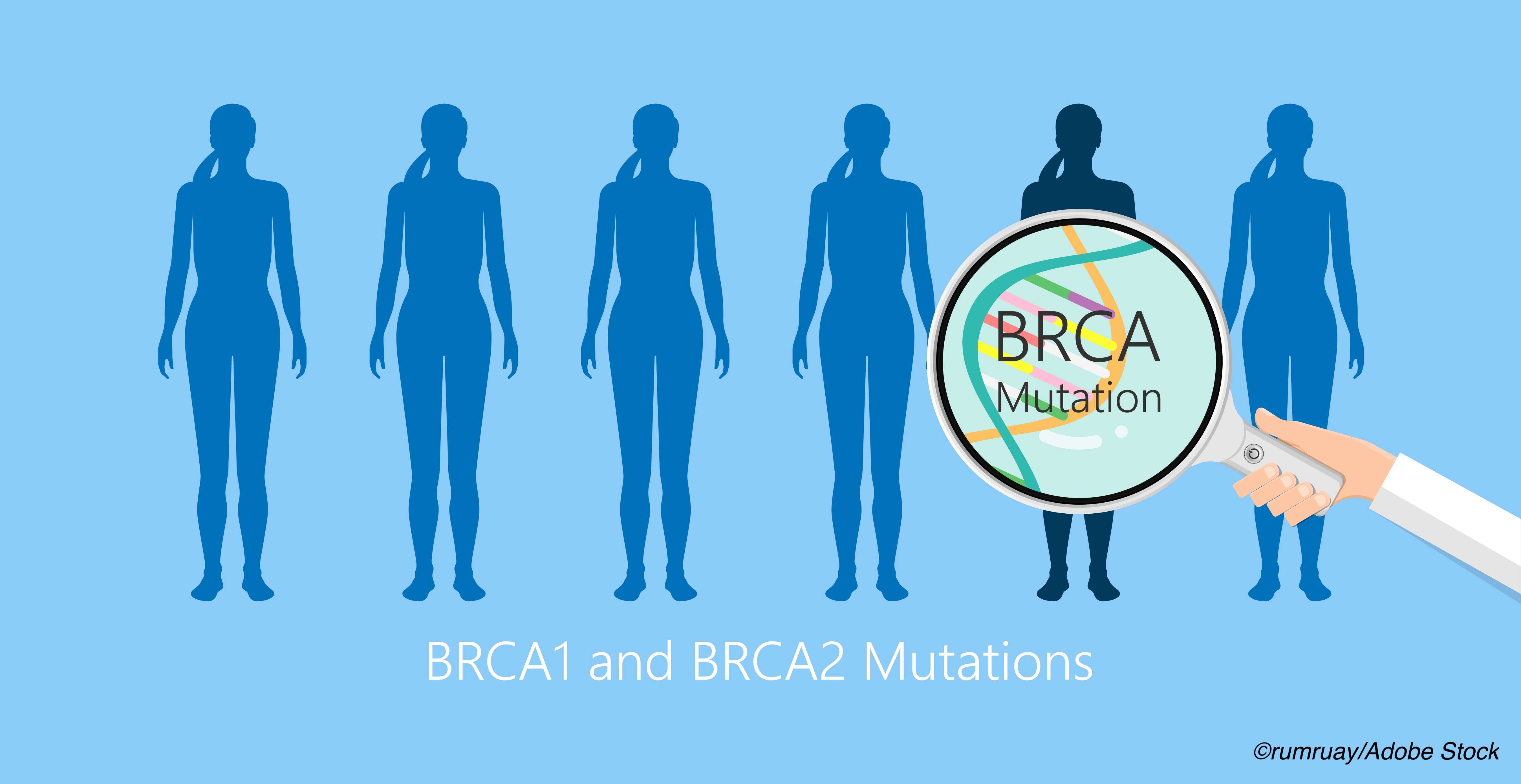Adding 12 months of treatment with the PARP inhibitor olaparib following completion of standard therapies significantly increased invasive disease-free survival in women with high-risk breast cancer and with BRCA1 or BRCA2 mutations, a finding that has practice-changing implications.
Researchers led by Andrew Tutt, MBChB, PhD, head of the division of breast cancer research and director of the Breast Cancer Now Toby Robbins Research Center at the Institute of Cancer Research, and the Breast Cancer Now Research Unit at Guy’s Hospital at King’s College in London, randomized 1,836 women with BRCA1 or BRCA2 variants and HER2-negative early breast cancer who had undergone standard local treatments, including adjuvant or neoadjuvant chemotherapy, to treatment with olaparib or placebo.
“At a prespecified event-driven interim analysis with a median follow-up of 2.5 years, the 3-year invasive disease–free survival was 85.9% in the olaparib group and 77.1% in the placebo group (difference, 8.8 percentage points; 95% confidence interval [CI], 4.5 to 13.0; hazard ratio for invasive disease or death, 0.58; 99.5% CI, 0.41 to 0.82; P<0.001),” Tutt and co-investigators for the OlympiA trial wrote in the New England Journal of Medicine, which published the results online concurrently with Tutt’s presentation of the findings as a late-breaking clinical trial at the ASCO 2021 virtual meeting. “The 3-year distant disease–free survival was 87.5% in the olaparib group and 80.4% in the placebo group (difference, 7.1 percentage points; 95% CI, 3.0 to 11.1; hazard ratio for distant disease or death, 0.57; 99.5% CI, 0.39 to 0.83; P<0.001).”
In his presentation, Tutt emphasized that, compared with placebo, patients receiving olaparib had a 42% reduction in the risk for the combined endpoint, “which was highly statistically significant as it needed to be to meet the stringent criteria for an interim analysis.”
And, although there were fewer deaths in the olaparib arm—59 versus 86—”the between-group difference was not significant at an interim-analysis boundary of a P value of less than 0.01.” The primary cause of death was breast cancer—55 of 59 deaths in the olaparib arm and 82 of the 86 deaths in the placebo group.
“Adverse events of grade 3 or higher that occurred in more than 1% of the patients in the olaparib group were anemia (8.7%), decreased neutrophil count (4.8%), decreased white-cell count (3.0%), fatigue (1.8%), and lymphopenia (1.2%). No adverse events of grade 3 or higher occurred in more than 1% of the patients in the placebo group,” they wrote. Although olaparib was generally well-tolerated, 25% of patients had a dose reduction versus just 5% of patients in the placebo arm.
ASCO president Lori Pierce, MD, who co-moderated a late-breaker press briefing, said the results are again an indication of the need for genetic testing of patients with high-risk breast cancer. Moreover, the “results could have an important impact on treatment decisions for this patient population, possibly including the use of a PARP inhibitor in the adjuvant setting.”
The median age of women in the trial was 42 in the olaparib arm (n=921) and 43 in the placebo arm (n=915) and more than 71% of the total cohort had BRCA1 mutations. “A total of 82.2% of the patients had triple-negative breast cancer (hormone-receptor negative and HER2 negative). Half the patients had received adjuvant chemotherapy and half neo-adjuvant chemotherapy, with the majority (93.7%) receiving a regimen that included both an anthracycline and a taxane.”
Tutt pointed out that although the PARP inhibitors olaparib and talazoparib are both approved for the treatment of metastatic germline BRCA1 or BRCA2 pathogenic or likely pathogenic variant–associated breast cancer based on progression-free survival benefit in the metastatic setting, OlympiA is the first trial to demonstrate the efficacy of the PARP inhibitor as adjuvant therapy in high-risk early breast cancer.
Looking at possible limitations, the researchers noted that although capecitabine is often used to treat triple-negative breast cancer based on results of the CREATE-X trial, that trial “did not specifically examine postneoadjuvant capecitabine effects in patients with germline BRCA1 or BRCA2 pathogenic or likely pathogenic variants, who were likely to be less than 15% of those enrolled. Postneoadjuvant capecitabine was not permitted in the OlympiA trial, because this therapy was not the standard of care when the trial was designed. Thus, the trial cannot inform the relative efficacy of olaparib as compared with capecitabine in this context.”
- In a randomized, placebo controlled trial of more than 1,800 women with high-risk early breast cancer who had BRCA1 or BRCA2 mutations, adjuvant therapy with olaparib significantly increased invasive-disease-free survival.
- The findings of this trial may change standard of care in adjuvant systemic therapy for patients with early stage HER2-negative breast cancer with BRCA1/2 mutations.
Peggy Peck, Editor-in-Chief, BreakingMED™
The OlympiA trial was funded by the National Cancer Institute and AstraZeneca.
Tutt disclosed consultant or advisory agreements with Artios, AstraZeneca, Merck Serono (institutional) Pfizer, and Prime Oncology. He received research funding paid to his instituton from Artioa, AstraZeneca, Merck KCaA, and Roche/Genentech. He received travel expenses from AstraZeneca and Pfizer.
Pierce disclosed stock ownership in PFS Genomics and royalties from UpToDate and PFS Genomics.
Cat ID: 122
Topic ID: 78,122,122,22,935,192,925,172



Create Post
Twitter/X Preview
Logout